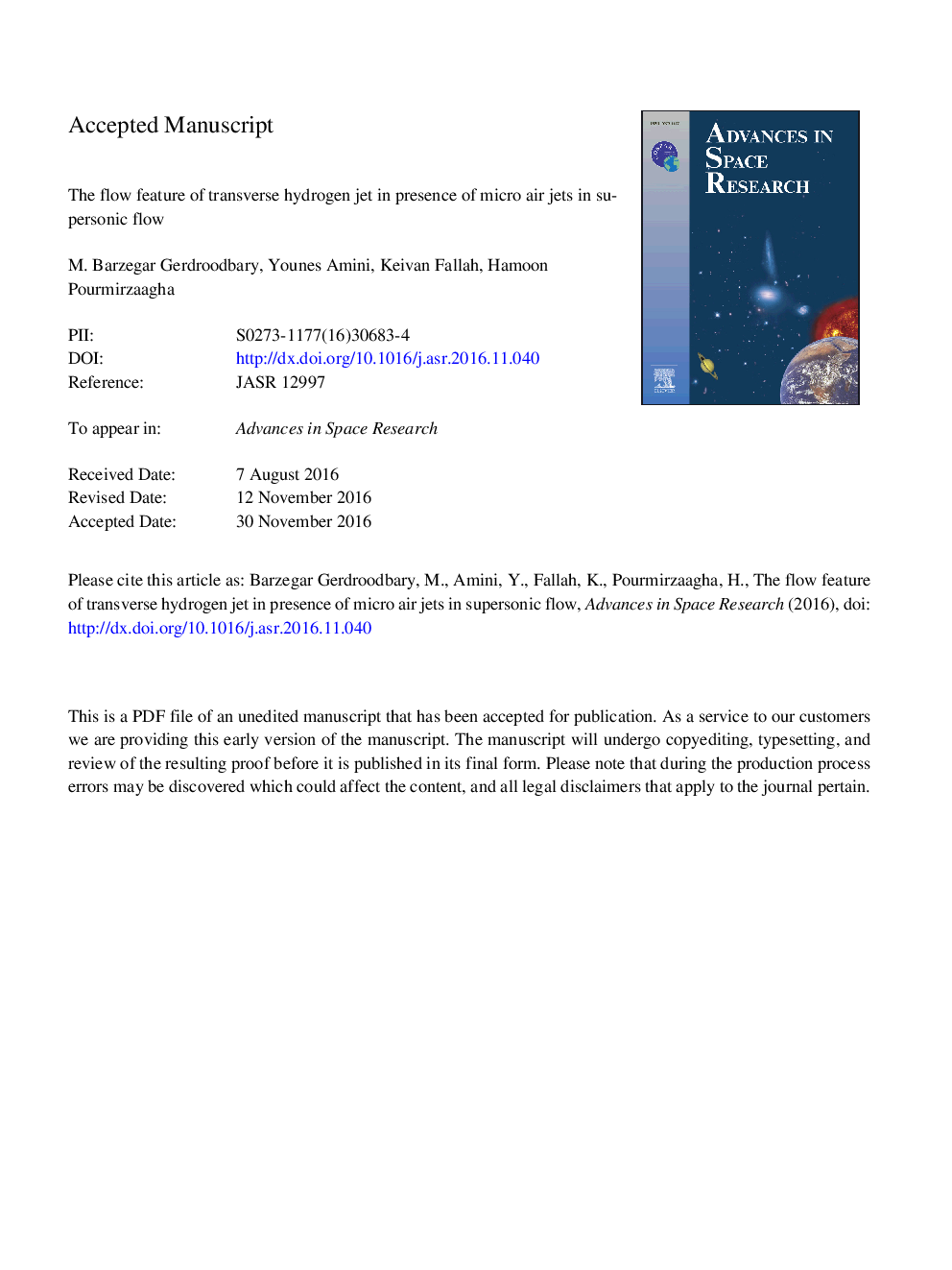| Article ID | Journal | Published Year | Pages | File Type |
|---|---|---|---|---|
| 5486262 | Advances in Space Research | 2017 | 32 Pages |
Abstract
Scramjet is found to be the efficient method for the space shuttle. In this paper, numerical simulation is performed to investigate the fundamental flow physics of the interaction between an array of fuel jets and multi air jets in a supersonic transverse flow. Hydrogen as a fuel is released with a global equivalence ratio of 0.5 in presence of micro air jets on a flat plate into a Mach 4 crossflow. The fuel and air are injected through streamwise-aligned flush circular portholes. The hydrogen is injected through 4 holes with 7dj space when the air is injected in the interval of the hydrogen jets. The numerical simulation is performed by using the Reynolds-averaged Navier-Stokes equations with Menter's Shear Stress Transport (SST) turbulence model. Both the number of air jets and jet-to-freestream total pressure ratio are varied in a parametric study. The interaction of the fuel and air jet in the supersonic flow present extremely complex feature of fuel and air jet. The results present various flow features depending upon the number and mass flow rate of micro air jets. These flow features were found to have significant effects on the penetration of hydrogen jets. A variation of the number of air jets, along with the jet-to-freestream total pressure ratio, induced a variety of flow structure in the downstream of the fuel jets.
Related Topics
Physical Sciences and Engineering
Earth and Planetary Sciences
Space and Planetary Science
Authors
M. Barzegar Gerdroodbary, Younes Amini, D.D. Ganji, âM. Rahimi Takam,
